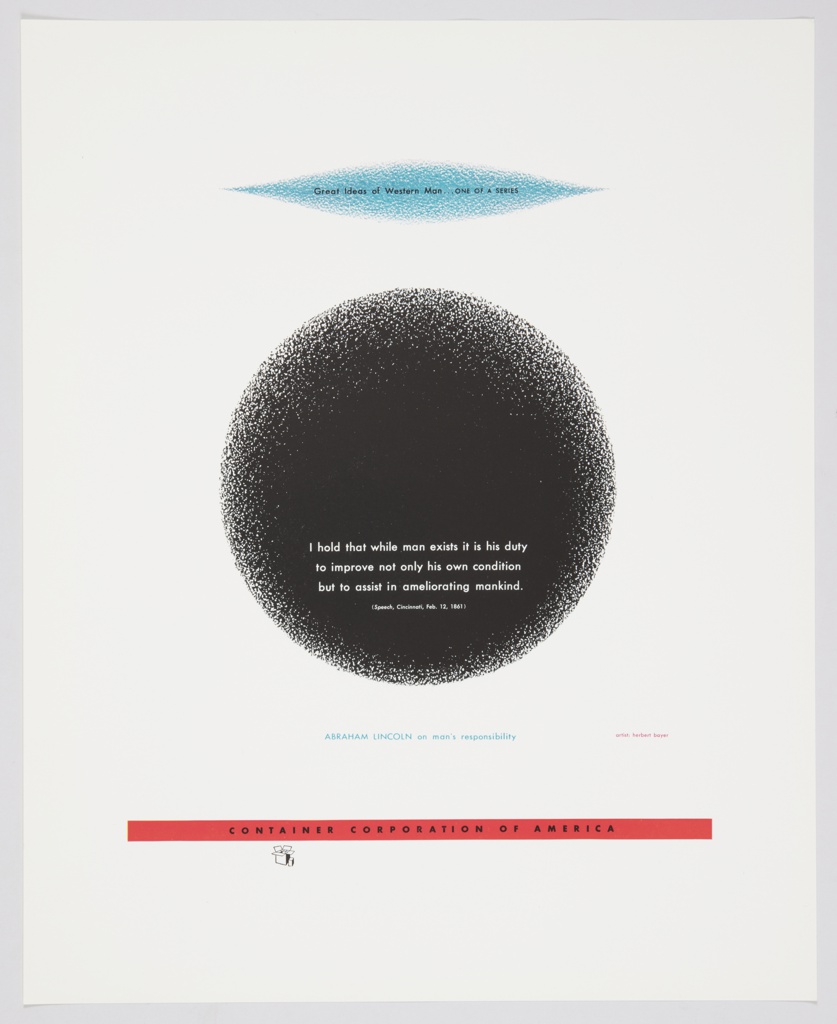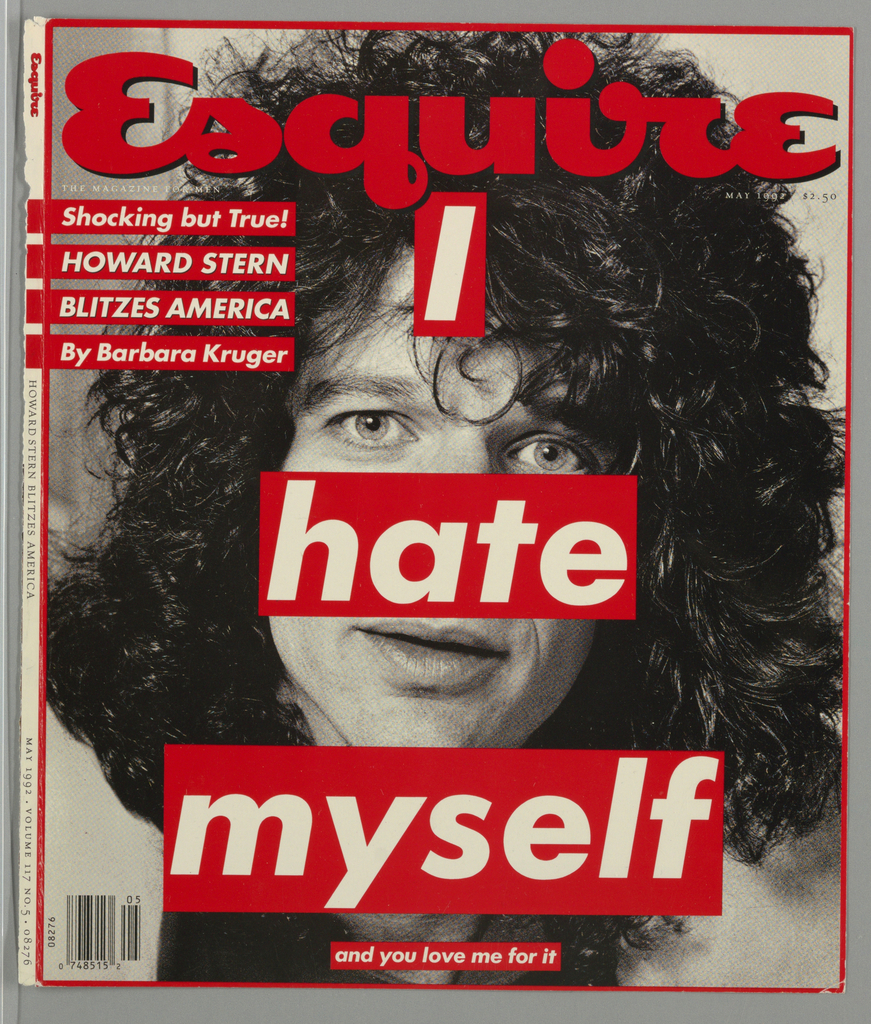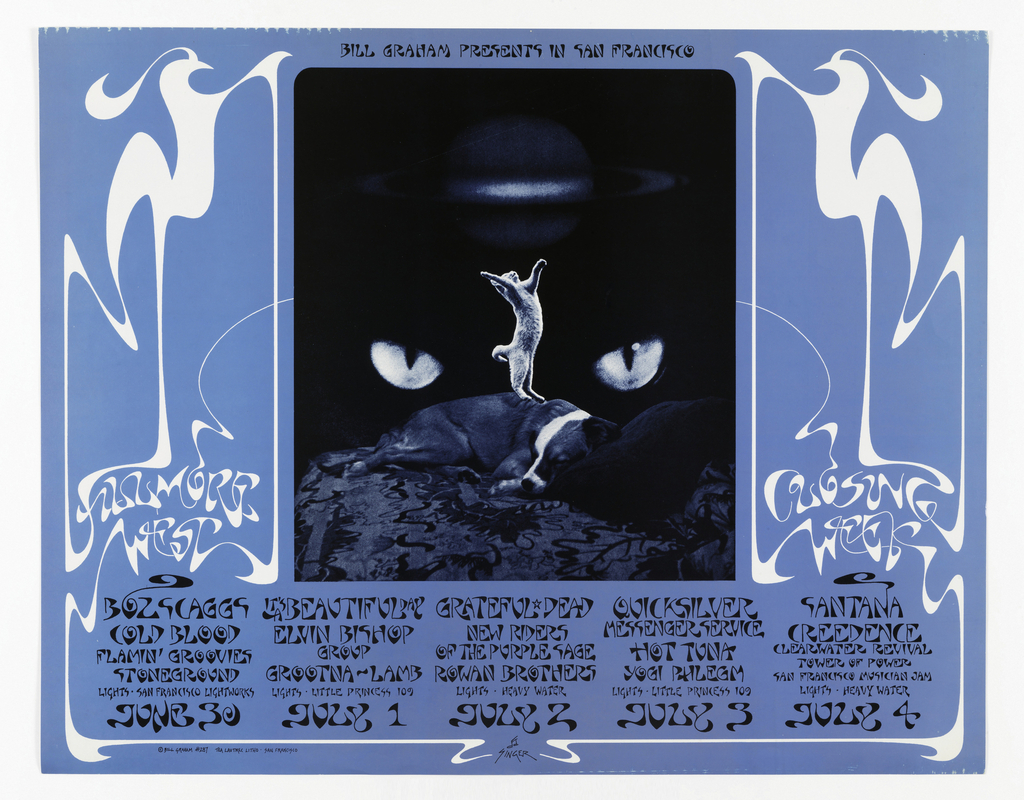Herbert Bayer first became involved with Container Corporation of America (CCA) when Walter Paepcke, at the suggestion of his wife Elizabeth, began commissioning advertisements from avant-garde artists and designers, advocating for a collaborative relationship between art and industry. After completing several innovative advertisements, Bayer designed an exhibition for CCA in 1945 titled “Modern Art in...
From the Blog
Known for her bold engagement with popular culture and mass communication, American conceptual artist Barbara Kruger provokes and entices the viewer with her cover design for the May 1992 issue of Esquire. Featuring a close-up, black and white photograph of the controversial shock-jock Howard Stern, the superimposed text obscures significant portions of his face, excluding...
As the San Francisco rock scene grew in the 1960s, posters were commissioned by the concert promoter Bill Graham for shows at popular venues such as the Fillmore Auditorium. David Singer produced more posters for Graham than any other artist, designing 75 posters from 1969 to 1990.[1] Although he had an unusual background for a...


